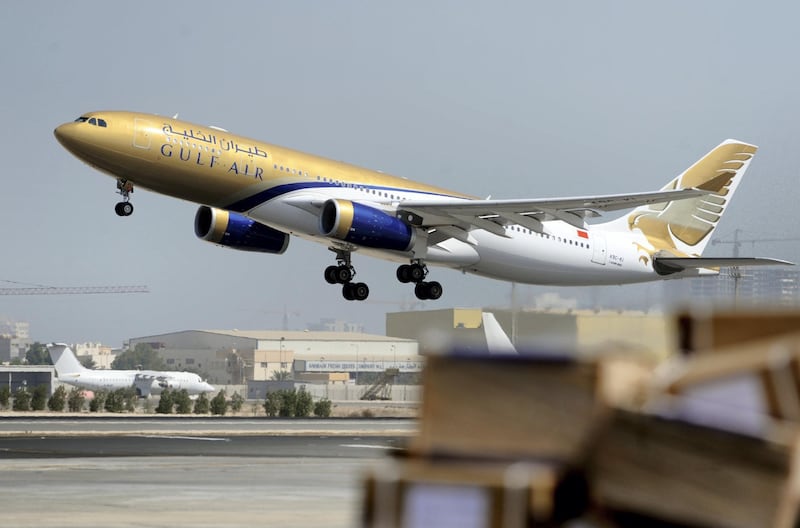Bahrain's Gulf Air expects to be profitable in five to eight years following a new growth strategy to turn around the airline with fleet expansion and broader network outside its core markets.
The state-owned airline will add eight routes in 2018 to mainly regional destinations, part of a long-term plan to serve 60 destinations by 2023, as it starts taking delivery of Boeing 787 Dreamliners and Airbus A320neos, Waleed Al Alawi, deputy chief executive of Gulf Air, told The National.
“We are a big airline, with a 70-year heritage, it’s not a five-minute plan to turn around the airline,” Mr Al Alawi said. “The airline business is fluid, you’ve got crises and changing oil prices that can affect your plan. Are we achieving our strategy? Yes."
In February, flag carrier Gulf Air touted a five-year growth strategy outlining new routes, a new business-class offering and a target to broaden its network with destinations in Asia Pacific and North America.
Once the dominant airline in the Gulf, it was outpaced by regional rivals Emirates and Etihad Airways in their competition for major hub status, leading Gulf Air to losses that resulted in job and route cuts amid years of restructuring the business.
The airline’s profitability target within at least five years will be a “challenge” in a region with overcapacity and several established carriers, John Strickland, director of London-based JLS Consulting, said.
“A year is an enormous span of time in terms of things that can change in the airline industry,” Strickland said. “Gulf Air’s ability to deliver on that target depends on external variables: economics, geopolitics in the region, airline plans in terms of plane orders and the neighbouring hubs.”
__________
Read more:
[ Arab airlines body welcomes ditching of US corporate tax plan for foreign carriers ]
[ Arab carriers hit out at US proposals to tax foreign airlines ]
__________
Bahrain’s recent discovery of significant shale reserves of oil and gas offshore, its biggest in over eight decades, is expected to boost demand for corporate bookings from industry executives.
“We’re seeing more people coming into Bahrain from the oil and gas industry to secure contracts,” Mr Al Alawi said. “It will be a continuous revenue stream starting now and hopefully for many, many years to come.”
As Arabian Gulf countries seek to diversify their economies and reduce reliance on oil revenues, Bahrain is seeking to attract more tourists and is working with the airline to funnel in transit passengers.
Gulf Air expects to carry 5.5 million passengers this year, up marginally from 5.1 million in 2017, Mr. Al Alawi said.
Swelling its current fleet of 28 planes, the airline will take delivery of 39 new planes starting with seven this year. The incoming five Boeing 787-9 Dreamliners and two Airbus A320 neos will be deployed on new routes in the Middle East. The airline plans to add Bangalore and Calicut in India, Abha and Tubuk in Saudi Arabia, Alexandria and Sharm Al Sheikh, Baku and Casablanca.
“They have the right kind of aircraft to pursue a risk-averse strategy,” Mr Strickland said. "The A320 neos are great if they’re operating regional routes and the 787 Dreamliners with smaller capacity and lower risk on selected long haul markets.”
Flights to markets outside the region are still under study, with no decision taken yet on specific cities or timeline to start the routes, Mr Al Alawi said.
The airline currently flies to 42 cities with Airbus A330s, A320s and A321s mainly to regional routes, India and some European cities.







